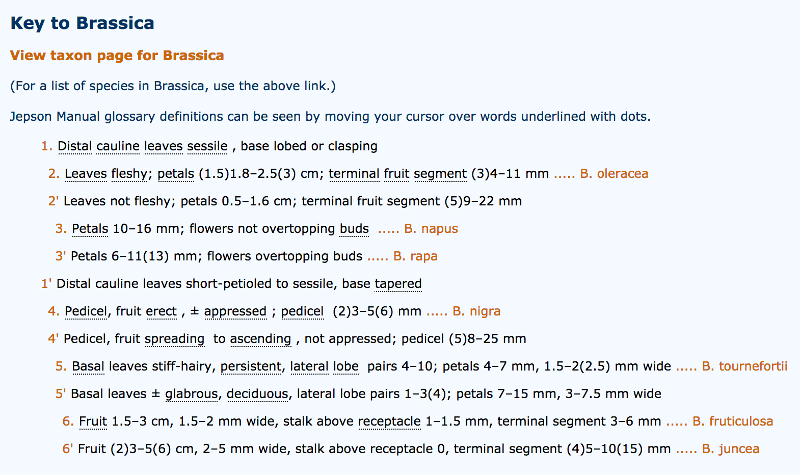Dichotomous keys
Dichotomous keys are tools for identifying organisms (or things) by making a series of choices or decisions.
An example (a key to species that are in the genus, Brassica) is shown below.

The first decision you must make is between 1 and 1'.
If you decide on 1', your next choice is between 4 and 4'. Always move to the choice directly below the statement you have decided is correct. If you choose 1', choices 2 vs 2' and 3 vs 3' are irrelevant; you will not have to make those choices.
In our example, if you decide 4 is correct and reject 4', you have (potentially) identified your species as Brassica nigra. If, however, you decide that 4' is correct, your next choice would be between 5 and 5'.
Notice that a statement in a key choice often has several parts. Look at every part. For example, your first choice in this key is:
1. Distal cauline leaves sessile, base lobed or clasping
vs.
1'. Distal cauline leaves short-petioled to sessile, base tapered
If the plant you are looking at has sessile leaves, the first part of these statements won't help you. You could go either way with a sessile leaf. You should, however, be able to make the decision based on the shape of the bases of the distal cauline leaves.
There are many ways to make a key, and different sources (different identification manuals with different keys) may use different characteristics, or the keys may begin with a different set of characteristics. If you find it difficult to identify a plant with one key, sometimes it helps to use a different one. We will just be using the Jepson Manual in this class, though.